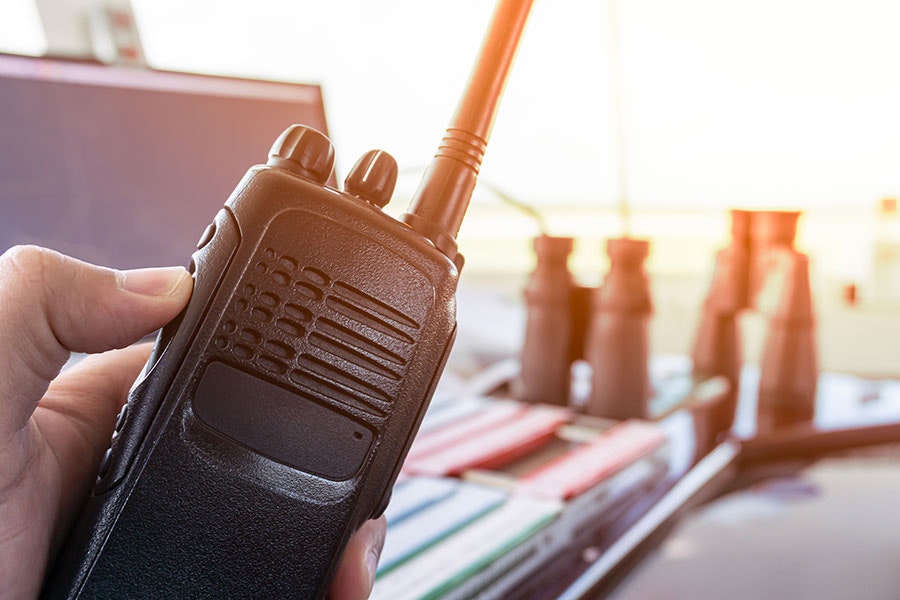Technology has come a long way in facilitating convenient and hands-free communication. From traditional mobile phones to smartwatches, innovations are consistently pushing the boundaries of how we connect and interact with each other. The latest development in this space is wearable digital walkie talkies – compact communication devices that can be worn as wristwatches or clipped onto clothing like badges.
The Convenience of Hands-free Communication
Traditional walkie talkies or handheld radios have been used for short-range voice communication for decades, predominantly in business, public safety, and industrial settings. However, they require the user to hold the device to transmit/receive calls. Wearable digital walkie talkies solve this issue by integrating the radio functionality directly into wrist-worn devices like smartwatches or clip-on badges. This allows completely hands-free two-way calls between users.
Workers can instantly reach their colleagues with a tap on their watches without fishing out radios from pockets or bags. Field staff can stay connected while performing manual tasks that require the use of both hands. Emergency responders can coordinate efforts seamlessly even while attending to critical situations. The convenience of not having to hold a device for calls has proved a huge productivity boost for industries relying on on-site group communication.
Varied Form Factors for Diverse Needs
While smartwatch-style wearable digital walkie talkie are ideal for customer-facing roles or indoor settings, other designs like clip-on badges are better suited for industrial/outdoor use cases. The flexible form factors allow organizations to deploy solutions matching employee needs – whether their jobs involve heavy machinery operation, outdoor worksites, sterile hospital environments etc.
Some players in this space even offer modular, interchangeable components – like detachable microphone/speaker units that can clip onto hard hats, uniforms or safety gear easily. This brings walkie talkie functionality directly to wherever it’s needed while keeping hands and attention free for tasks. The growing variety of ergonomic, ruggedized wearable designs aim to fulfill communication requirements across diverse industries.
Two-way Communication on the Go
Traditional handheld radios are confined to short operating ranges within commercial buildings or outdoor areas. Wearable radios break free of this limitation by integrating wireless internet connectivity. Using private LTE/5G networks or commercial cellular infrastructure, they facilitate secure digital radio calls beyond line-of-sight limits.
Field workers can stay in touch with central command centers many miles away. First responders are no longer constrained by terrain as they traverse incident sites. Mobile work crews receive updates seamlessly even when moving between locations. The seamless switching between short-range digital radio and long-range cellular networking promises truly mobile, always-on group communication.
Advanced Features for Productivity and Safety
Apart from basic two-way voice capabilities, modern wearable radios incorporate additional functionalities for optimizing workflow processes:
– Integrated GPS allows real-time location tracking of mobile workers, aiding dispatch and coordination.
– Man-down alarms automatically alert colleagues if a user becomes incapacitated on the job.
– Push-to-talk buttons on devices or Bluetooth paired peripherals like earpieces offer hands-free calling.
– Programmable buttons can be customized for instant access to critical repeat calls.
– Integrations with industry software power status updates, work orders dispatch, inventory checks etc. directly from the wrist.
Such advanced features boost staff safety, optimize task management and increase overall productivity for businesses relying on mobile workforces. Customizable solutions accommodate specific needs of diverse sectors from utilities to warehousing.
Privacy, Security and Compliance
While the benefits of digital mobility are clear, information security remains a priority for organizations adopting wearable technologies especially in regulated industries. Vendors address this by:
– Offering military-grade encryption for calls and data on both short range radios and long range cellular networks.
– Supporting strict privacy controls with Role-Based Access to limit functionality and access per user.
– Facilitating compliance with industry regulations around network access, data storage locations and privacy policies.
– Providing tamper-proof designs validated by certifications like IP-68, MIL-STD and comprehensive audits.
As industrial-grade versions with certified security and controls become mainstream, wearable radios will gain trust across sectors with stringent compliance needs ranging from healthcare to oil & gas.
The Future of Wearable Communication
As 5G cellular networks and private LTE solutions become pervasive globally, wearable radios will evolve into all-in-one communication centrals. Future versions are expected to incorporate:
– Integration of push-to-talk radios with messaging, smartphone apps and collaboration tools on a single wrist-worn device.
– Advanced AI assistants for enhanced workflows through contextual data, predictive maintenance, computer vision etc.
– Use of augmented reality for remote assistance, document sharing and new forms of spatial communication.
– Interfaces enabling control of smart machines, sensors and IoT systems in addition to human team coordination.
*Note:
- Source: Coherent Market Insights, Public sources, Desk research
2. We have leveraged AI tools to mine information and compile it



